The Grand Palace and Wat Phra Kaew, located in the same place, are the symbolic centre of the Kingdom of Thailand and are definitely a must-see.
Its construction began in the late eighteenth century by King Rama I when he decided to move the royal residence from Thonburi to the opposite bank of the Chao Phraya River, easier to defend against potential enemy attacks.
Opening hours: 08h30 – 16h00
Admission fee: 500 baht
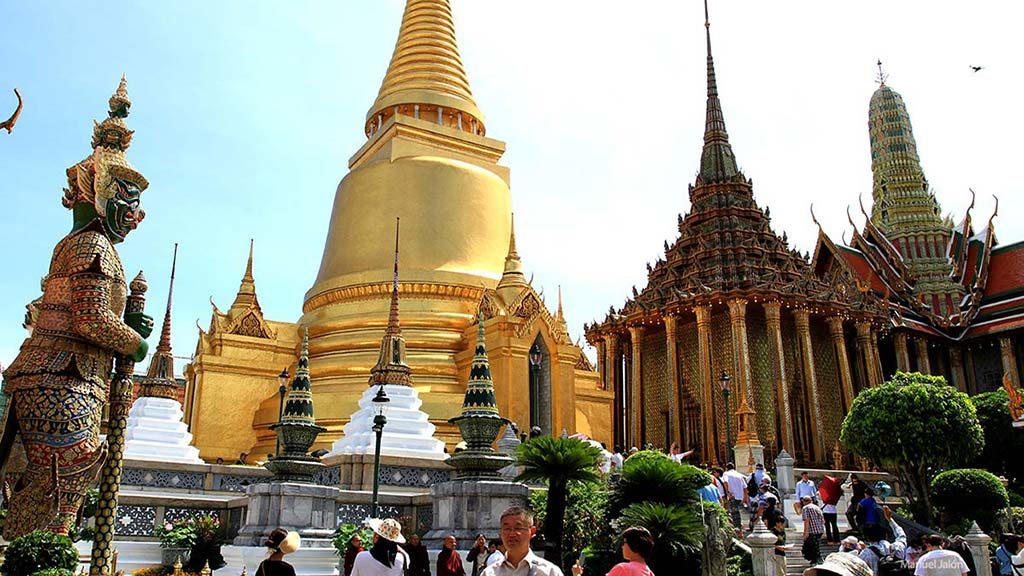
The Grand Palace is undoubtedly the brightest jewel of the crown. To get the most out of your visit, we will give you an overview that highlights some of the features we find particularly interesting.
To start with, you have to remember that its design and construction began in the last quarter of the 18th century, a few years after the great defeat suffered in Ayutthaya.
The destruction and looting of the ancient capital by Burmese enemies not only marked the end of a brilliant period for the Kingdom of Siam but also led to the loss of much of the Thai people’s historical and cultural heritage, a tragedy for their collective memory.
In many ways, they had to start over.


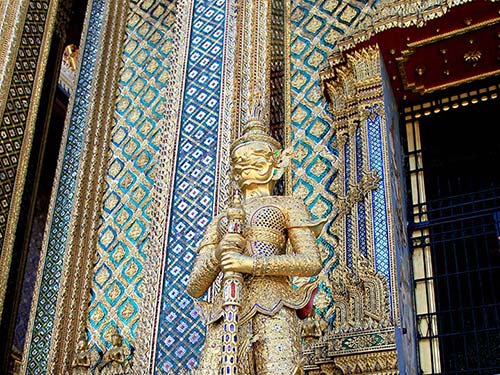
So what you will find within the walls is, on the one hand, the new residence of the monarch and the premises needed to manage the kingdom. Designs tailored to those functions that convey the solemnity and distance so typical of such an absolute monarchy.
And on the other hand, you see architectural and ornamental elements that not only serve to decorate and embellish but also have an important symbolic purpose. They tell us things about the particular universe of the Thai people, their religious history and their beliefs. To a certain extent, they recreate part of the historical memory lost at Ayutthaya.
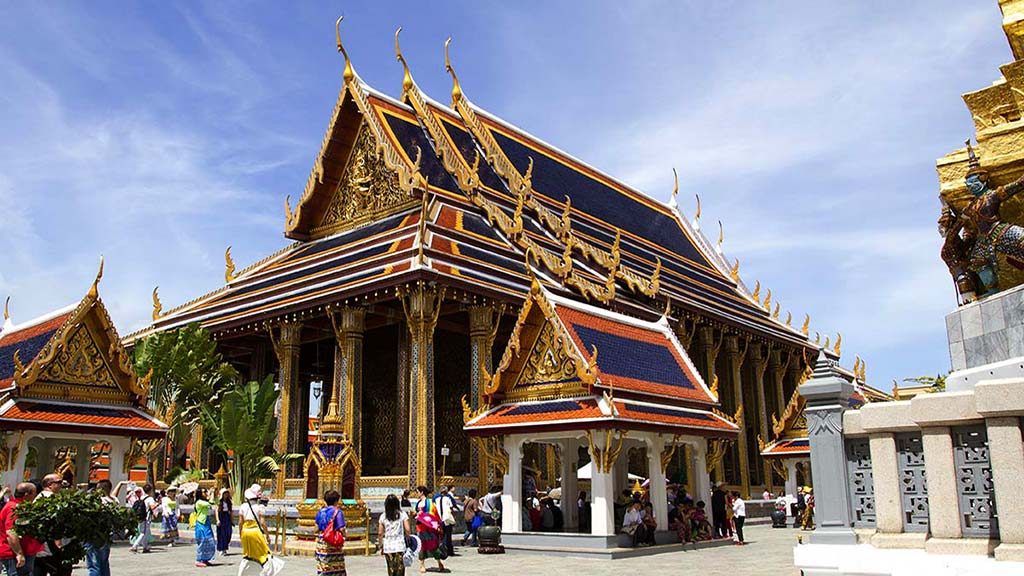
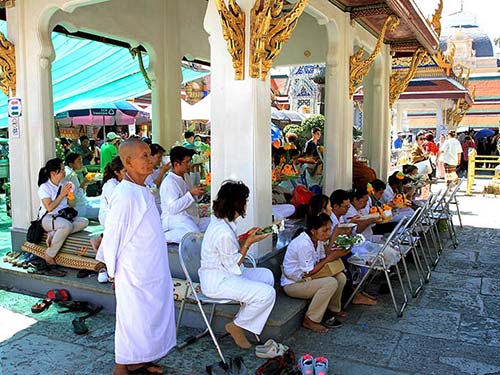
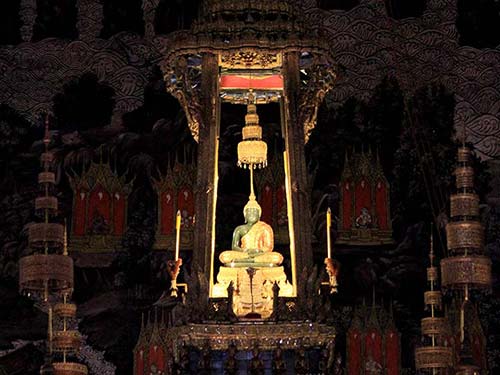
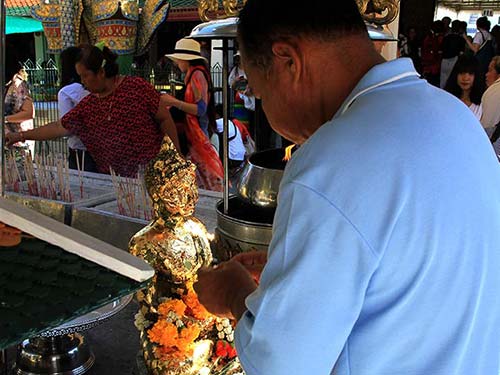
A complex network built out of Hindu cosmology, animistic beliefs and the spiritual supremacy of Buddhism, which upholds the identity of the Thai people and gives legitimacy to the new ruling dynasty.
One of the main attractions is the Emerald Buddha located in the Royal monastery. The building reflects the classical canons of Buddhism, although no community of monks resides there.
The Buddha was discovered in 1434 at a stupa in Chiang Rai, hidden under a plaster cover that attempted to disguise it as a regular cast statue, and following a long and arduous journey, it was finally brought inside the palace.
It’s one of Thailand’s most revered Buddhas although it is sculpted out of a block of green jade.
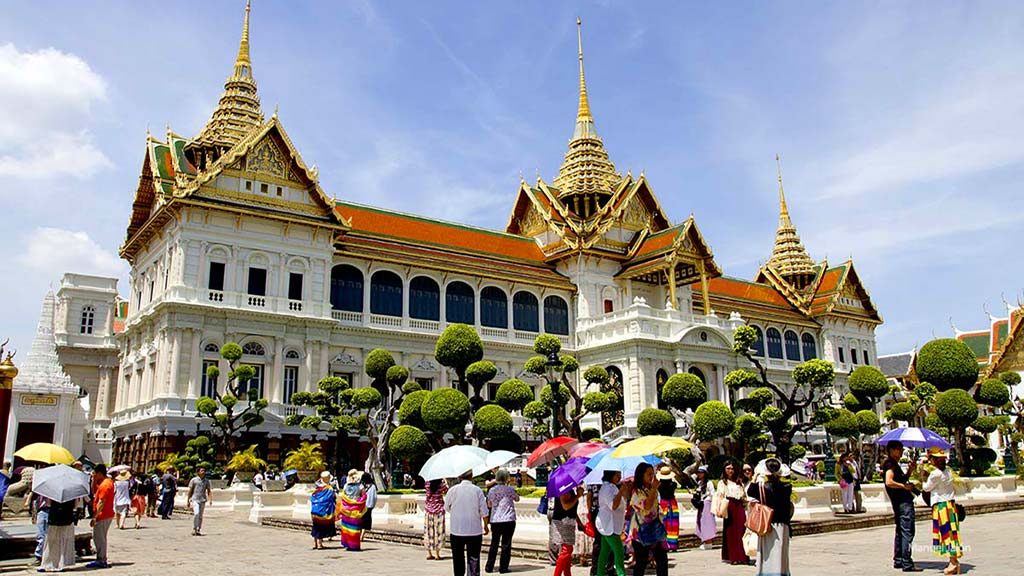
Alongside these samples of the past, you can also see specific features of modernity.
The Chakri Maha Prasat is a neoclassical design by English architect John Clunich. The style of its construction was imported from Europe at a time when the old continent was waking up to the early intellectual Enlightenment and the incipient Industrial Revolution. The roof includes classic golden spires in authentic Thai style.

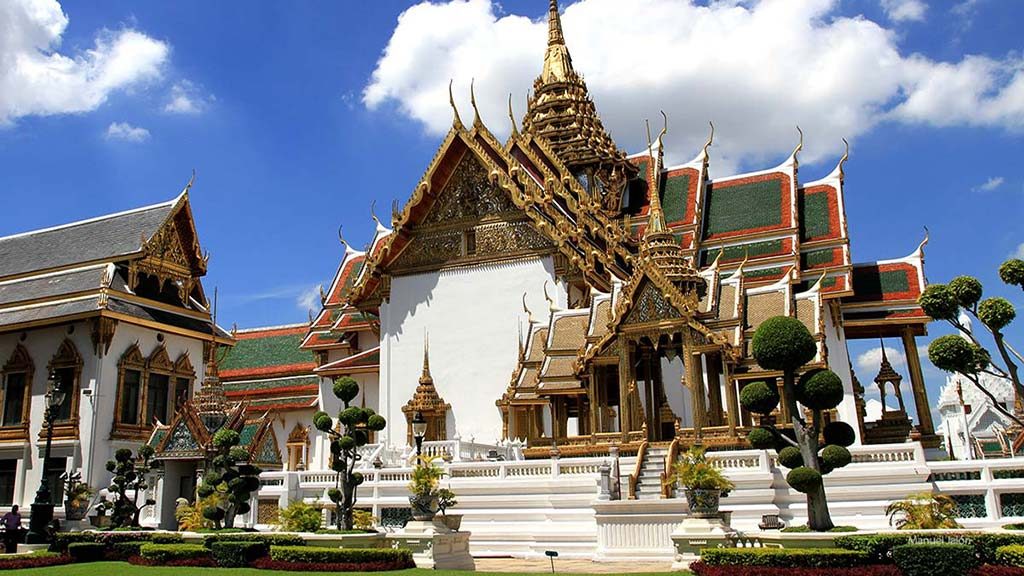
Finally, let’s take a look at the paintings on the perimeter walls surrounding the entire complex. They are a sequence of murals that tell the Ramakien, the famous legend of the Thai hero Phra Ram, a former hero king of Ayutthaya.
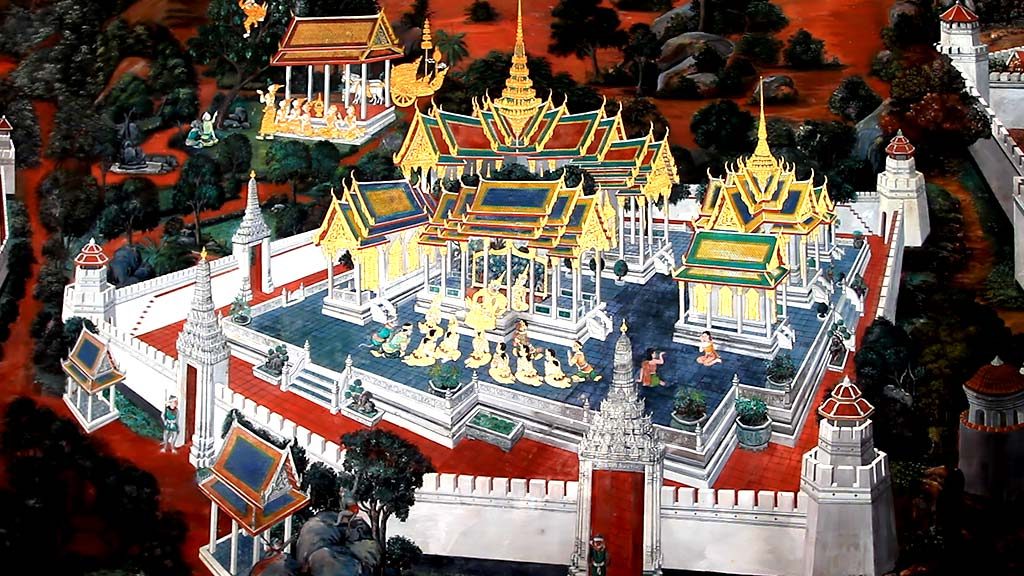
The Thai Ramakien is an adaptation of the Indian Ramayana, a grand narrative dating much earlier in time. King Rama I and his successor, Rama II, took part in writing it.
These epic poems are the standard way in Indian tradition to hand down their sacred history in the form of a moral code to be followed by their believers.
You should count on it taking you close to an hour and a half, or so, to visit the Grand Palace and you are very likely to encounter a large number of holidaymakers, therefore it’s a good idea to go first thing in the morning, especially on scorching days or in the high season.
Covering your shoulders and legs is compulsory (the scarves aren’t accepted). If you do not have any suitable garments, you can borrow some to cover yourself on the grounds of the Palace. The service is free of charge and you will only need some change to leave the relevant deposit in cash, although a lot of time is wasted.
Finally, to place the Grand Palace on the timeline, as a historical context, we offer you this post.
